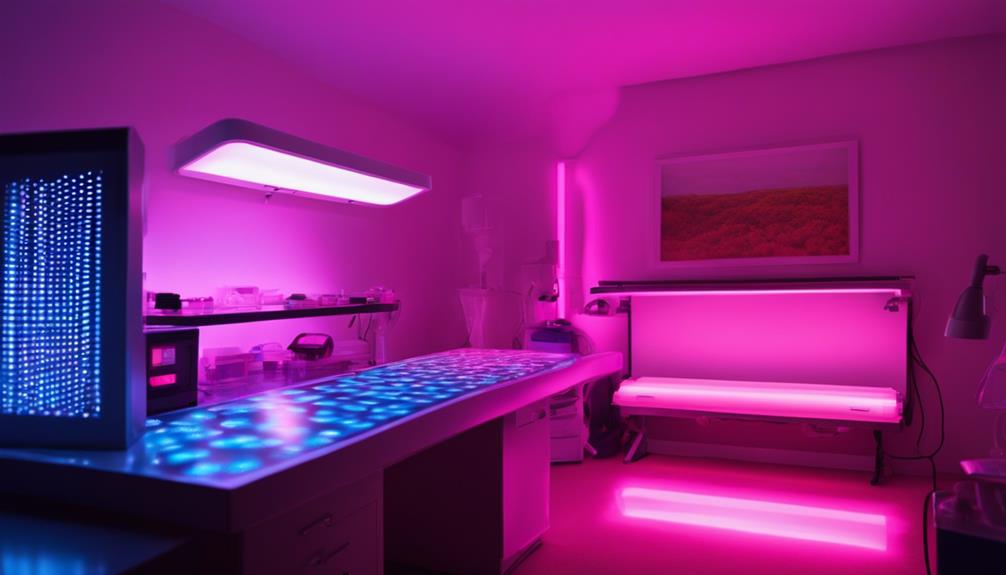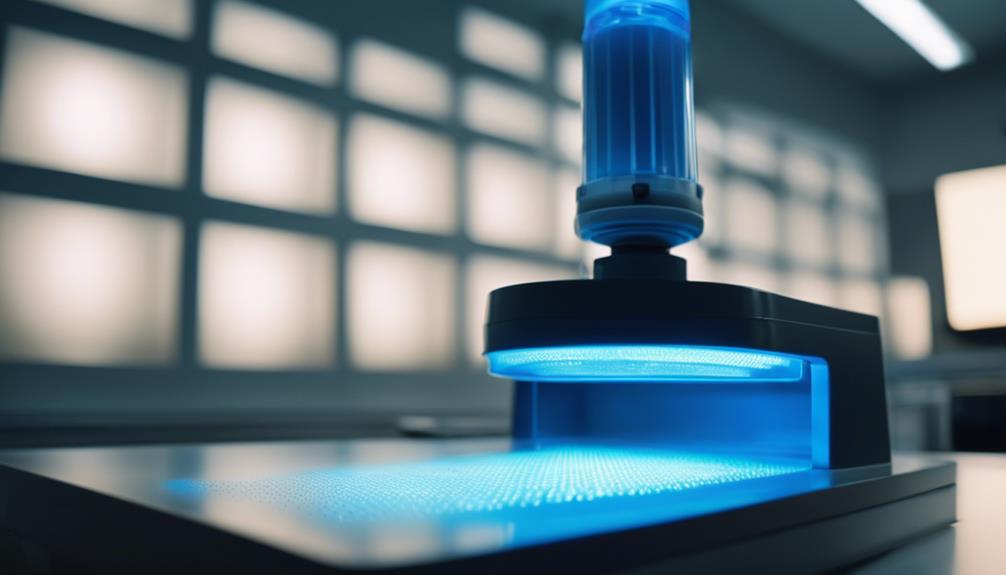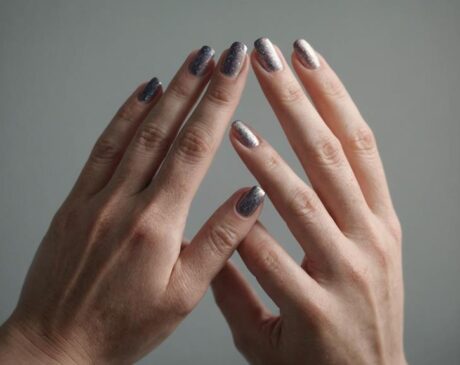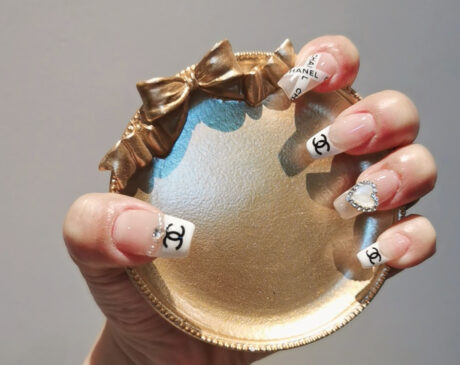Is There Artificial UV Light?

Yes, there is artificial UV light that mimics the sun's rays. It's used in disinfection, skin treatment, and artwork preservation. Different UV lamps emit specific wavelengths for various interactions. You should wear protective gear and follow guidelines for safe usage. UV light offers health benefits like Vitamin D synthesis but can pose risks if exposure is excessive. UV light is vital in sterilization processes across industries. Regulations govern its safe application. Want to learn more about the types, production, and applications of artificial UV light?
Key Takeaways
- Different types of artificial UV light, like Mercury Vapor Lamps and LED UV Lamps, exist for various applications.
- Artificial UV light mimics the sun's UV rays and is used in disinfection, skin treatment, and artwork preservation.
- UV lamps emit specific wavelengths for tailored interactions with matter.
- Understanding and proper utilization of artificial UV light are crucial for maximizing benefits and minimizing harm.
- Safety precautions like wearing UV-blocking gear and controlling exposure time are essential when using artificial UV light.
Understanding Artificial UV Light

If you're curious about artificial UV light, understanding its properties and effects is crucial. Artificial UV light, often produced by devices like tanning beds and UV lamps, mimics the sun's ultraviolet rays. This technology has revolutionized various industries, from healthcare to electronics, offering innovative solutions for different purposes.
The properties of artificial UV light can be harnessed for disinfection, skin treatment, and even artwork preservation. By comprehending how different wavelengths of UV light interact with matter, scientists and engineers have developed cutting-edge applications that continue to push the boundaries of what is possible.
Moreover, understanding the effects of artificial UV light on human health is essential. While controlled exposure can have benefits like vitamin D synthesis, excessive exposure can lead to skin damage and health risks. Therefore, proper knowledge and utilization of artificial UV light are vital for maximizing its advantages while minimizing potential harm.
Types of Artificial UV Lamps
Now, let's talk about the different types of artificial UV lamps that are available. You'll learn about the various UV lamp types, the different light spectrum varieties they offer, and the essential safety precautions you should keep in mind when using them. Understanding these key points will help you navigate the world of artificial UV light more effectively.
UV Lamp Types
What are the different types of artificial UV lamps available for various purposes? When it comes to harnessing UV light for different applications, there are several types of artificial UV lamps to choose from. Here are four popular options:
- Mercury Vapor Lamps: These lamps are commonly used for disinfection purposes due to their ability to emit UV-C light.
- LED UV Lamps: Known for their energy efficiency and longer lifespan, LED UV lamps are ideal for various medical, industrial, and commercial uses.
- Fluorescent UV Lamps: Widely used in tanning beds and some industrial processes, these lamps emit UV light when excited by an electric current.
- Metal Halide Lamps: Offering a broader spectrum of UV light, metal halide lamps are suitable for applications requiring specific UV wavelengths.
Light Spectrum Varieties
When exploring artificial UV lamps, understanding the light spectrum varieties offered by different types can greatly impact their effectiveness and suitability for specific applications. UV lamps come in various types, each emitting light at different wavelengths within the UV spectrum. Mercury vapor lamps are common and emit UV light at 254nm, ideal for germicidal applications. Fluorescent lamps produce UV light when excited by an electric current, with a range from 10nm to 400nm. LED UV lamps are gaining popularity for their energy efficiency and ability to emit specific wavelengths for targeted applications. Each type offers unique benefits, so choosing the right light spectrum variety is crucial for achieving optimal results in your UV light applications.
Safety Precautions
Considering the different types of artificial UV lamps available, how can you ensure safety while using them effectively? Here are four essential safety precautions to keep in mind:
- Wear Protective Gear: Invest in UV-blocking goggles and clothing to shield your eyes and skin from harmful UV radiation.
- Follow Manufacturer Guidelines: Adhere to the recommended usage instructions provided by the lamp's manufacturer to prevent overexposure.
- Control Exposure Time: Limit your exposure time to artificial UV light to prevent skin damage and potential health risks.
- Monitor Skin Reactions: Regularly check your skin for any unusual reactions or changes, and consult a dermatologist if needed for professional advice.
Production of Artificial UV Light
You'll learn about the various sources that produce UV light, the different types of UV lamps available, and the wide range of applications for UV light in various industries. Understanding the production of artificial UV light involves exploring the mechanisms behind UV light sources and the specific characteristics of UV lamps. By delving into these aspects, you'll gain insights into how artificial UV light is harnessed for diverse purposes.
UV Light Sources
Artificial UV light is generated by specialized light sources designed to emit ultraviolet radiation. When it comes to producing UV light, there are several innovative options available:
- Mercury Vapor Lamps: These lamps contain mercury and emit UV light when an electric current passes through the vapor.
- LED UV Lamps: Utilizing Light Emitting Diodes (LEDs), these lamps offer energy-efficient and long-lasting UV light sources.
- Excimer Lamps: These lamps use a noble gas and a reactive gas mixture to produce intense bursts of UV light.
- Metal Halide Lamps: By combining metal halides and mercury, these lamps create UV light suitable for various applications.
These UV light sources showcase the advancements in technology, providing efficient and effective options for generating artificial UV light.
Types of UV Lamps
When exploring the production of artificial UV light, a variety of UV lamps stand out as key players in this field. These lamps are designed to emit specific wavelengths of UV light for various applications. Here are three common types of UV lamps used today:
| UV Lamp Type | Description |
|---|---|
| Mercury Vapor Lamps | Emit UV light by passing an electric arc through mercury vapor. Widely used for curing applications. |
| LED UV Lamps | Solid-state lighting sources that emit UV light efficiently and with precise control. Energy-efficient and long-lasting. |
| Excimer Lamps | Produce UV light using noble gas and a reactive gas mixture. Commonly used in medical and industrial applications for their high-intensity output. |
Each type offers unique advantages, making them essential tools in harnessing the power of artificial UV light.
Applications of UV Light
Exploring the various applications of UV light in the production of artificial UV light reveals a multitude of innovative uses across different industries. When it comes to creating artificial UV light sources, here are four exciting applications to consider:
- Disinfection: Utilizing UV light for disinfection purposes in water treatment, air purification, and surface sterilization.
- Polymer Curing: Employing UV light to cure coatings, adhesives, and inks in industries like manufacturing and printing.
- Medical Treatments: Harnessing UV light for phototherapy to treat skin conditions like psoriasis and eczema.
- Security Marking: Implementing UV fluorescent materials for anti-counterfeiting measures in currency, documents, and products.
Each of these applications showcases the versatility and effectiveness of artificial UV light in various fields.
Applications of UV Light Technology
UV light technology offers a wide range of practical applications in various industries and settings. From disinfection to material curing, UV light has become an essential tool for innovative solutions. Here are some key applications of UV light technology:
| Application | Industry | Benefits |
|---|---|---|
| Water Purification | Environmental | Efficient disinfection |
| UV Printing | Printing | High-quality prints |
| UV Sterilization | Healthcare | Rapid and effective disinfection |
In the environmental sector, UV light is used for water purification due to its efficient disinfection capabilities. In the printing industry, UV printing offers high-quality prints that dry instantly. Healthcare facilities utilize UV sterilization for rapid and effective disinfection, reducing the spread of harmful pathogens. These applications showcase the versatility and effectiveness of UV light technology in driving innovation across different fields.
Health Benefits of Controlled UV Exposure

Discover the significant health benefits that come with controlled exposure to UV light. Here are the top reasons why incorporating UV exposure into your routine can be beneficial for your health:
- Vitamin D Synthesis: Controlled UV exposure helps your body produce vitamin D, essential for strong bones, a healthy immune system, and overall well-being.
- Improved Mood: UV light stimulates the production of serotonin, a neurotransmitter that contributes to feelings of happiness and well-being.
- Skin Conditions: UV light can be used to treat certain skin conditions like psoriasis, eczema, and vitiligo, providing relief and improving skin health.
- Boosted Immune System: Moderate UV exposure has been linked to a strengthened immune system, helping your body fight off infections more effectively.
Incorporating controlled UV exposure into your routine can bring a range of health benefits, from boosting your mood to supporting your immune system. Just remember, moderation is key to reaping the rewards of UV light without risking overexposure.
Risks of Excessive UV Light Exposure
Excessive exposure to UV light can pose significant risks to your health, ranging from skin damage to an increased risk of skin cancer. While controlled UV exposure can have health benefits, overexposure can lead to sunburn, premature aging of the skin, and in severe cases, skin cancer. The UV radiation from the sun can penetrate the skin, causing DNA damage and mutations that may result in skin cancer over time. Additionally, UV rays can weaken the immune system, making it harder for your body to defend against illnesses.
It is crucial to protect yourself from excessive UV light exposure by using sunscreen, wearing protective clothing, and seeking shade during peak sunlight hours. Innovations in sunscreen technology have made it easier than ever to shield your skin from harmful UV rays while still allowing you to enjoy time outdoors. By being mindful of your UV exposure and taking steps to protect your skin, you can reduce the risks associated with excessive UV light exposure and maintain healthy skin for years to come.
UV Light in Sterilization Processes

If you are looking to explore practical applications of UV light beyond its risks, consider its role in sterilization processes. UV light is a powerful tool used in various industries for sterilizing surfaces and equipment. Here are four ways UV light is revolutionizing sterilization:
- Hospitals: UV light is being used to disinfect hospital rooms, surgical tools, and even the air, helping to reduce the spread of harmful pathogens.
- Food Industry: In food processing facilities, UV light is employed to sanitize equipment and packaging materials, ensuring food safety and extending shelf life.
- Water Treatment: UV light is utilized in water treatment plants to eliminate bacteria, viruses, and other microorganisms, providing clean and safe drinking water to communities.
- Laboratories: Researchers and scientists use UV light to sterilize equipment like pipettes and petri dishes, maintaining a sterile environment crucial for experiments and tests.
The innovative applications of UV light in sterilization processes showcase its potential to enhance cleanliness and safety across various sectors.
Regulations on UV Light Usage
When considering the use of UV light, it is essential to be aware of regulations governing its application. Innovations in UV technology have led to increased scrutiny regarding its safe and effective use. In many countries, regulations dictate the permissible UV light wavelengths, exposure limits for human safety, and guidelines for proper installation and maintenance of UV light equipment.
Compliance with these regulations is crucial to ensure that UV light is harnessed responsibly and efficiently. Failure to adhere to these guidelines could result in health risks, environmental harm, and suboptimal performance of UV light systems. Additionally, regulatory bodies continuously update these standards to keep pace with advancements in UV technology and emerging research on its effects.
Frequently Asked Questions
Can Artificial UV Light Be Harmful to Pets?
Artificial UV light can be harmful to pets. Ensure they have safe exposure levels. Consult a veterinarian for guidance. Protect your furry friends from potential harm caused by excessive artificial UV light exposure.
Are There Specific Safety Guidelines for UV Light Use at Home?
When using UV light at home, follow safety guidelines. Protect yourself and pets by wearing proper eyewear and ensuring adequate ventilation. Avoid direct skin exposure and be cautious with prolonged use to prevent harm.
How Does Artificial UV Light Impact Plant Growth?
Artificial UV light revolutionizes plant growth, unlocking new levels of vitality and yield potential. By harnessing its power, you can cultivate thriving gardens indoors, fostering lush greenery and bountiful harvests year-round.
Can UV Light Technology Be Used for Art Preservation?
To preserve art, UV light technology proves invaluable. It guards against degradation, maintaining the artwork's integrity for years to come. Embrace this innovative method to safeguard precious pieces and ensure their longevity in pristine condition.
What Are the Environmental Implications of UV Light Production?
When it comes to UV light production's environmental impact, it's like balancing on a tightrope. You must tread carefully to minimize energy consumption and waste, ensuring a greener future for all.




